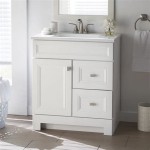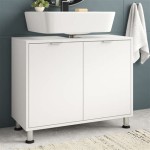Should You Use Small Tiles In A Bathroom? Exploring the Merits and Considerations
The selection of tiles for a bathroom renovation or construction project involves a myriad of factors, including size, material, color, and pattern. Among these elements, tile size plays a crucial role in the overall aesthetic and functionality of the space. Small tiles, generally defined as those measuring less than 4 inches in any dimension, offer a distinct set of advantages and disadvantages compared to their larger counterparts. This article aims to explore these aspects to provide a comprehensive understanding of whether small tiles are a suitable choice for a given bathroom project.
The use of small tiles in bathrooms has a long and storied history. From ancient mosaics to contemporary designs, small tiles have been employed to create visually stunning and durable surfaces. Their inherent versatility allows for intricate patterns, complex designs, and the ability to conform to curved surfaces. However, the inherent characteristics of small tiles also present challenges related to installation time, grout maintenance, and the potential for a busy or cluttered appearance.
Aesthetic Advantages of Small Tiles
One of the primary advantages of small tiles lies in their aesthetic potential. They offer a level of detail and intricacy that is difficult to achieve with larger tiles. This allows for the creation of elaborate mosaics, geometric patterns, and custom designs that can serve as a focal point in the bathroom. Small tiles, particularly those made of glass or natural stone, offer a wide range of color variations and textures, further enhancing the visual interest of the space.
Small tiles are particularly well-suited for creating curved surfaces and accents. Their small size allows them to conform to the contours of shower niches, rounded walls, and other architectural features with greater ease than larger tiles. This adaptability makes them ideal for adding visual interest and softening the hard lines often associated with bathroom design. Furthermore, the increased grout lines associated with small tiles contribute to the overall texture and visual depth of the surface.
The use of contrasting grout colors with small tiles can dramatically alter the appearance of the surface. Light-colored grout can create a clean and airy feel, while dark-colored grout can highlight the pattern and create a more dramatic look. This versatility allows for a high degree of customization, enabling homeowners to tailor the design to their specific preferences.
Furthermore, small tiles offer a unique ability to create a sense of scale and proportion in smaller bathrooms. While large tiles can sometimes overwhelm a small space, small tiles can create a more intimate and inviting atmosphere. The increased grout lines can also visually break up the surface, making the room appear larger and less monotonous.
Practical Considerations and Challenges
Despite their aesthetic appeal, small tiles also present certain practical considerations and challenges that must be carefully weighed. One of the most significant of these is the increased installation time and complexity. Due to their small size, installing small tiles requires more precise measurements, careful alignment, and meticulous grouting. This can significantly increase the labor costs associated with the project.
The increased number of grout lines associated with small tiles also presents a long-term maintenance challenge. Grout lines are inherently porous and susceptible to staining, mildew growth, and discoloration. This necessitates regular cleaning and sealing to maintain the appearance and hygiene of the surface. While advancements in grout technology have improved the stain resistance and durability of grout, regular maintenance remains essential.
Another consideration is the potential for a busy or cluttered appearance. In smaller bathrooms, the use of highly patterned or brightly colored small tiles can create a visually overwhelming effect. It is crucial to carefully consider the overall design scheme and select tiles that complement the size and layout of the room. Larger tiles with a simpler design may be a more suitable choice for bathrooms where a minimalist aesthetic is desired.
The cost of materials can also be a factor when considering small tiles. While some small tiles may be relatively inexpensive, others, particularly those made of high-end materials such as glass or natural stone, can be significantly more expensive than larger tiles. It is important to obtain accurate cost estimates for both the tiles and the installation labor before making a final decision.
Finally, the choice of grout color can significantly impact the overall appearance of the bathroom. Light-colored grout can be difficult to keep clean, while dark-colored grout can make the bathroom appear smaller and darker. Careful consideration should be given to the grout color to ensure that it complements the tiles and the overall design scheme.
Material and Application Considerations
The choice of material for small tiles is crucial to ensure their durability and suitability for the bathroom environment. Common materials include ceramic, porcelain, glass, and natural stone. Each of these materials offers unique characteristics in terms of water resistance, stain resistance, durability, and aesthetic appeal.
Ceramic tiles are a popular choice for bathrooms due to their affordability, water resistance, and ease of maintenance. Porcelain tiles are even more durable and water-resistant than ceramic tiles, making them a suitable choice for high-traffic areas such as shower floors. Glass tiles offer a unique aesthetic appeal and are resistant to staining and mildew growth. Natural stone tiles, such as marble and granite, add a touch of luxury and sophistication to the bathroom, but require more careful maintenance to prevent staining and water damage.
The application of small tiles also requires careful planning and execution. The substrate, or the surface to which the tiles are applied, must be properly prepared to ensure a smooth and level surface. This may involve patching cracks, leveling uneven areas, and applying a waterproof membrane to prevent water damage. The use of a high-quality thin-set mortar is essential to ensure proper adhesion of the tiles. The tiles should be carefully aligned and spaced to create a consistent and visually appealing pattern.
Grouting is the final step in the installation process and is crucial to the overall appearance and durability of the tiled surface. The grout should be carefully applied to fill the gaps between the tiles and then cleaned off the surface. The grout should be allowed to cure properly before the surface is exposed to water or heavy traffic. After the grout has cured, it should be sealed to protect it from staining and water damage.
In summary, the decision to use small tiles in a bathroom involves a careful consideration of both aesthetic advantages and practical challenges. Small tiles offer a unique ability to create intricate designs, curved surfaces, and custom patterns. However, they also require more installation time, careful maintenance, and a thoughtful design scheme to avoid a busy or cluttered appearance. By carefully weighing these factors, homeowners can make an informed decision about whether small tiles are a suitable choice for their bathroom project.
Ultimately, the best tile choice depends on a variety of factors including the size of the bathroom, the desired aesthetic, the budget, and the homeowner's maintenance preferences. Consulting with a qualified tile contractor or interior designer can provide valuable insights and guidance in making the right decision for a given project.

What Size Tile Should I Use In A Small Bathroom Warehouse

Tiling A Small Bathroom Dos And Don Ts Bob Vila

Choosing Tiles For A Small Bathroom Tile Wizards

What Size Tile Should I Use In A Small Bathroom Warehouse

Big Tile Or Little How To Design For Small Bathrooms And Living Spaces S Of America

Big Tile Or Little How To Design For Small Bathrooms And Living Spaces S Of America

Tiles Talk Find The Right Size For A Small Bathroom

10 Small Bathroom Tile Ideas Victoriaplum Com

These 7 Tiles Ideas Can Make A Tiny Bathroom Feel Bigger

6 Small Bathroom Tiles That Are Anything But Boring Domino
Related Posts







